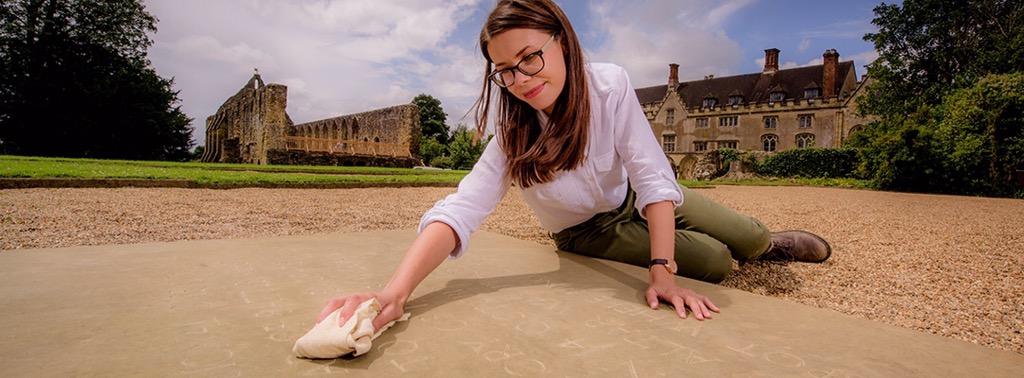The memorial stone which marks where King Harold fell in battle has been moved.
A new study of the 1066 battlefield and abbey has revealed a more accurate spot where the altar which marked where King Harold fell in battle was located. The memorial stone has been moved to the new location and the rooftop of the Gatehouse has been opened to the public for the first time as part of a £1.8m re-presentation and conservation of the site.
Since the 12th century, sources have claimed that Battle Abbey’s church was built “on the very spot where according to tradition, among the piled heaps of corpses Harold was found”, with the high altar located “where the body of Harold (slain for the love of his country) was found.”
However, new advances in the understanding of the layout of the abbey’s church reveal that the site of this altar was further east than previously thought. The location of the high altar was lost when the abbey church was demolished after the suppression of the abbey in 1538.
Excavations since the 19th century gradually revealed the church, which had been altered in the 13th century. Now, thanks to improvements in our understanding of where exactly high altars were placed in Romanesque great churches, the memorials tone has been moved 6 metres to the east.
Kate Mavor, English Heritage’s Chief Executive, said: “In 1066, two armies met on this field in East Sussex and the outcome defined England for centuries. To understand how Harold lost, why William won, and what that meant for the country, a visit to the battlefield is a must. Highlighting the location where Harold fell and opening up these new spaces means that people can discover more about one of the most important battles in our history.”
The opening of the rooftop and moving of the memorial stone form a part of a wider conservation project at 1066 Battle Abbey, where vital work has been undertaken to protect the site for future generations. This includes the restoration of the spiral staircases, specialist repairs to the stonework of the monks’ dormitory, and conservation of the Victorian dairy and ice-house.
Roy Porter, Senior Properties Curator for English Heritage, said: “This new location adds to our understanding of the Battle of Hastings but also gives us a valuable insight into William’s abbey, a fascinating story in its own right – and one we’ll be exploring further in future.”







